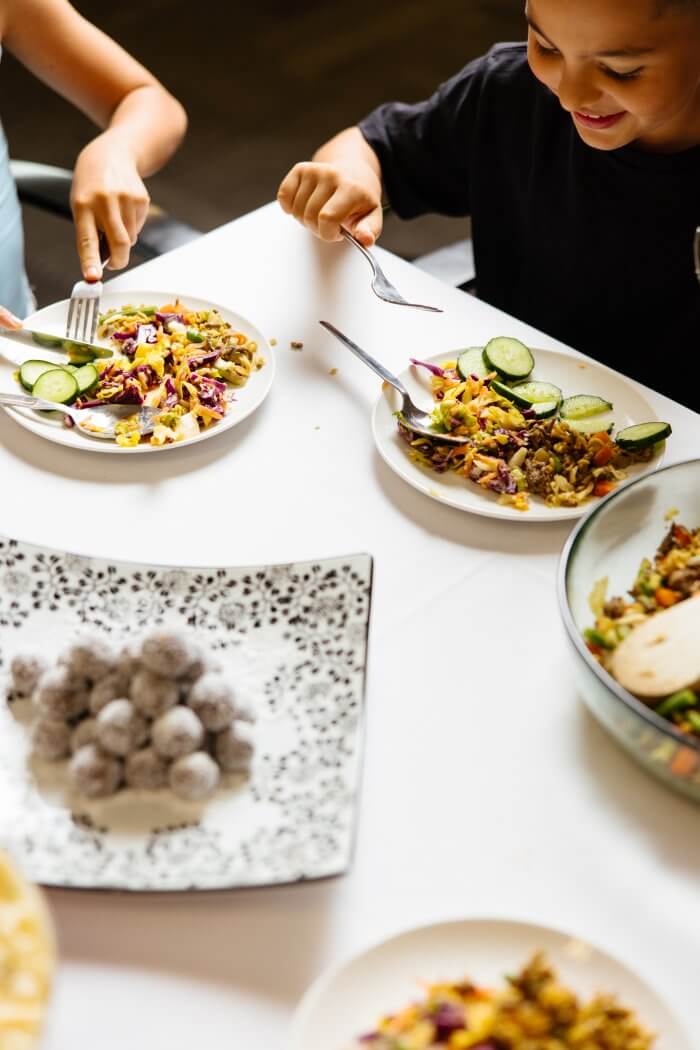Why food labels like ‘good’ and ‘bad’ are unhelpful when feeding children?
Food labels give it a moral value
If you’re a parent, you’ve most likely felt the heavy burden of responsibility to get your child to eat nutritious everyday foods. Over recent decades, the language around food has changed and we’re more likely to hear foods categorised as either ‘good’ or ‘bad’ foods, especially when communicating with children. Whilst it’s true that some foods offer more health promoting properties, (cue the usual suspects, our good friends fruit and vegetables) than others (I’m sure you can name a few yourself), by labeling foods ‘good’ or ‘bad’ it is implying that some foods carry a superior nutritional or moral value. This may seem harmless at first and an easy way to explain why we can’t eat chips and lollies all day to our children (or ourselves!) but using this language can potentially cause more harm in the long term.

Giving food a good/bad label can lead to children labeling themselves
The rates of disordered eating patterns and body image issues in children are on the rise. There are many factors at play, but the language we use around food certainly plays a role. If we label more nutritious everyday foods as ‘good’ and the less nutritious foods as ‘bad’ children can begin to internalise this message which can shape their view of themselves. This can ultimately contribute to feelings of guilt, shame and a negative body image which may lead to disordered eating habits which can persist for life.
So, what labels should we give food?
None! Food is just food.
We don’t need to give food labels like good, bad, healthy, unhealthy or guilt free.
It is the responsibility of parents and caregivers to provide a variety of foods at any given mealtime, and the child’s responsibility to decide what they eat, and how much to eat from what you offer. Sometimes, foods will fall into the more nutritious category, while other foods may offer less nutrition, but may offer more taste, comfort, or enjoyment depending on your current needs. It is important to see food beyond nutritional value and consider what other aspects the food can offer in terms of psychological and social wellbeing.
We can positively influence our child’s relationship with food if we treat food with a neutral approach, meaning that we don’t use terms like good, bad, naughty, junk, rubbish, healthy, or unhealthy as a way of describing food, and by removing constant restrictions on less nutritious foods. As a parent, this approach aims to give our child the opportunity to develop a healthy relationship with food throughout their life.
What can we do instead?
– Focus on creating enjoyable family mealtimes.
– Role model eating a variety of foods.
– Use food neutral language.
– Trust that your child will learn to enjoy the fabulously nutritious vegetables alongside their preferred foods.
– Support your child’s natural curiosity and encourage them to explore foods by asking them to describe the taste, texture, aroma and colour.
– Discuss with your child how the food they are eating is impacting their body both physically and emotionally.
– Involve children in the kitchen with food preparation and cooking process.
Create a stress-free environment around mealtimes
To help you and your child feel more relaxed and confident around all types of foods, mealtimes are a great way to build connections and role model positive language rather than placing the focus on the nutritional value of the food. They are eating, you can create a stress-free environment around mealtimes which will. Looking for some support to help your child become a confident happy eater? Then check out our upcoming free nom! Children programs here.
